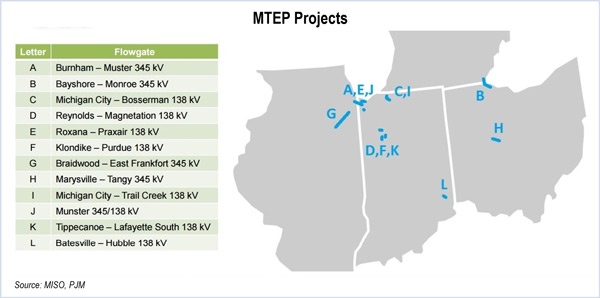By Amanda Durish Cook
MISO and PJM’s targeted market efficiency project portfolio has dipped from seven projects to five.
The latest project to drop off is the Marysville-Tangy 345-kV upgrade in central Ohio, which was supposed to deliver $122 million in benefits at a “minimal” cost. PJM and MISO staff have since learned that the line’s emergency rating will be increased by the end of this year, eliminating the need for a congestion-relieving fix.
The Klondike-Purdue 138-kV project in north-central Indiana was also scrapped this fall after RTO staff discovered the congestion the project was aimed at relieving was merely outage-driven. (See MISO, PJM Move Forward on TMEPs; 6 Projects Planned.)
The five remaining projects are expected to cost $14.45 million and deliver $100 million in benefits, a 6.9:1 benefit-cost ratio. The original seven-project TMEP package was expected to cost $19 million and deliver $117 million in benefits, a 6.2:1 ratio.
During the Dec. 2 MISO-PJM Interregional Planning Stakeholder Advisory Committee conference call, PJM engineer Alex Worcester said the RTOs will continue to monitor the Marysville-Tangy project site to see if it could use future improvements.
“We’re still looking at a $100 million benefit for [less than] $15 million in this portfolio of projects,” Worcester added.
There are no recommended changes to the other five projects, MISO and PJM staff said.
WPPI Energy’s Steve Leovy said he wanted more information on how the TMEP costs and benefits were calculated. “Based on [the dropped projects], the benefit metric could have changed significantly,” Leovy said.
Leovy also said he would like the TMEP cost-benefit calculation to resemble the benefit analysis used in MISO’s Market Congestion Planning Study. Leovy said when the TMEP project creation is filed with FERC, he will recommend WPPI make a filing asking the commission to consider making MISO use the Market Congestion Planning Study’s benefit analysis for TMEPs.
MISO engineer Adam Solomon disagreed, replying, “We think having separate benefits metrics is OK.”




